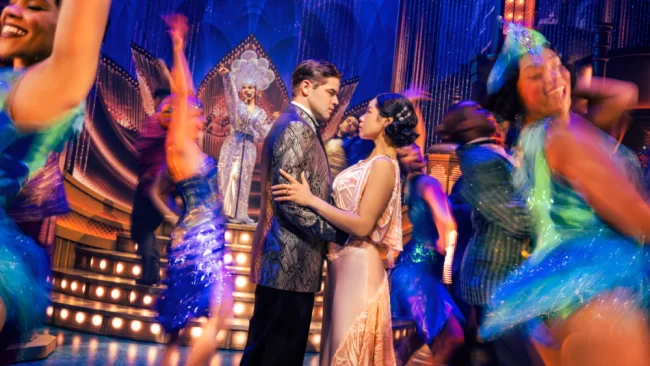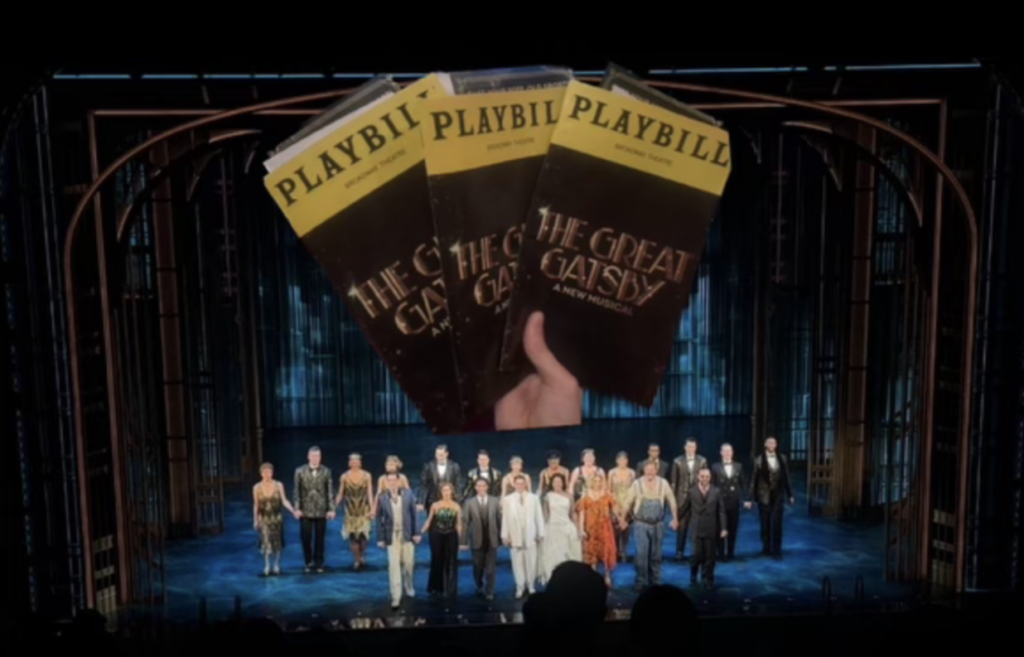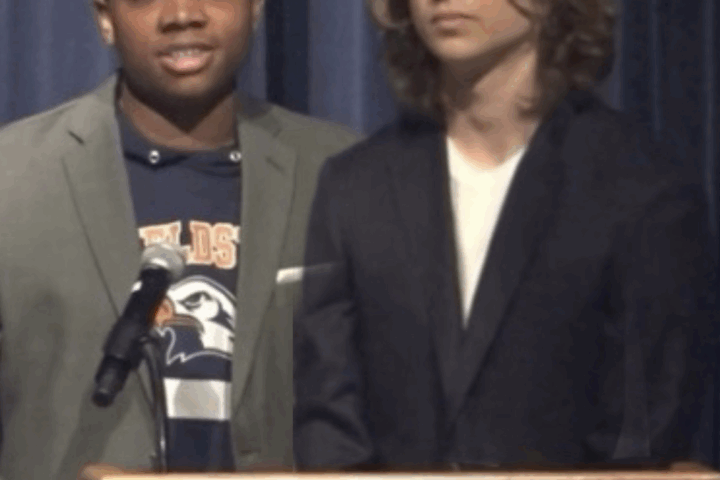“The Great Gatsby” recently opened on Broadway, starring Jeremy Jordan from Newsies as Jay Gatsby and Eva Noblezada from Hadestown as Daisy Buchanan. The musical is based on F. Scott Fitzgerald’s timeless tale of rags to riches and unrequited romance, a novel critiquing the American Dream and the societal decadence of the Roaring Twenties. The book is a staple in high school curricula, including Fieldston’s 10th-grade English program. While visually stunning with all the glitz and glamor that comes to mind with the Art Deco period, the musical falls disappointingly short of capturing the deeper nuances that make the original story an iconic critique of American ideals. In its flamboyant efforts to entertain, the musical only skims the surface, providing the audience with an enjoyable but ultimately shallow rendition of this great American novel.
The sets, by Paul Tate DePoo III, are dazzling. They feature mesmerizing projections of the infamous green light and the Queensboro bridge, lush art deco interiors, including symbols of this period such as Gatbsy’s yellow Rolls-Royce and Tom’s blue coupe, and glitzy gold chains dangling from the ceiling. The vibrant technicolor costumes also embody this decadent world. The audience is transported to the razzle-dazzle of the Roaring Twenties.
The musical adaptation of “The Great Gatsby” clearly captures all the glamor needed to bring the story to life and entertain the audience. However, it prioritizes the glitz of Gatsby’s parties over the novel’s soul — the critique of the American Dream. For instance, it neglects to cover the transformation of poor, humble James Gatz to the enigmatic wealthy Jay Gatsby, an iconoclastic symbol of a self-made man. This focus on entertainment over substance is evident in the musical’s portrayal of Gatsby’s character, who lacks the underlying desperation for idealized love that drives him in the novel. Using Fitzgerald’s beautiful prose, “extraordinary gift for hope,” is what makes this character “great.” Without this development, is our Gatsby still “great”? Overall, the musical adaptation comes across as simply an interclass romance story rather than a great fable with a moral lesson meant to provoke deep thought and reflection about socioeconomic class in American society and who can really attain the American Dream.
Another issue with this musical is that no memorable song encapsulates Jay Gatsby’s tragic and fatalistic pursuit of the elusive American Dream. In contrast, the musical “Wicked” had the song “Defying Gravity,” capturing Elphaba’s heroic transformation from a misunderstood outcast to a self-assured individual. Another example, Lin Manuel Miranda’s rap musical, “Hamilton,” included many memorable, catchy songs rich with references to historical events, figures and documents from the late 18th century. Where is Jay Gatsby’s big moment to belt out his “Defying Gravity?” or “Alexander Hamilton”? Without this anthem, the audience is left feeling empty inside. There are some good jazz and tap numbers to try to make up for this omission. But still, something is amiss. The musical has big shoes to fill; after all, it is an adaptation of one of the greatest American novels by one of the greatest American writers about one of the greatest times in American history.
The song “My Green Light” attempts to be the big song of the musical. In the book, the green light symbolizes Gatsby’s unattainable dreams that are always just out of reach and the elusive nature of the American Dream. However, the song reduces the symbol to a literal level. Instead, the song only focuses on Gatsby’s tangible desire for Daisy. This interpretation ignores the nuance beyond this iconic symbol and, therefore, loses an opportunity to capture the tragedy behind the false ideals wrapped around the American Dream.
The 10th-grade English curriculum at Fieldston centers around understanding and grappling with what it means to carry on the American legacy. In the novel, Fitzgerald strongly delineates the Valley of Ashes. The character Wilson describes this as an impoverished place God had either forgotten or ignored, a world without balance and only extremes in severity of consequence. There is a price to pay for the extreme materialism that Gatsby, with his new money, inhabits with Daisy and Tom in the upper class. The musical subtly alludes to the Valley of Ashes by only using it as a set, but never explains its full significance. Without this contrast anchoring the play as in the novel, there is little substance to analyze after watching the play.
While the Broadway adaptation of “The Great Gatsby” is visually captivating, it is ultimately a shallow interpretation of Fitzgerald’s American masterpiece. Overall, it fails to provoke the deeper reflection necessary to understand his critique of the American Dream, earning it a rating of 3 out of 5 stars.







